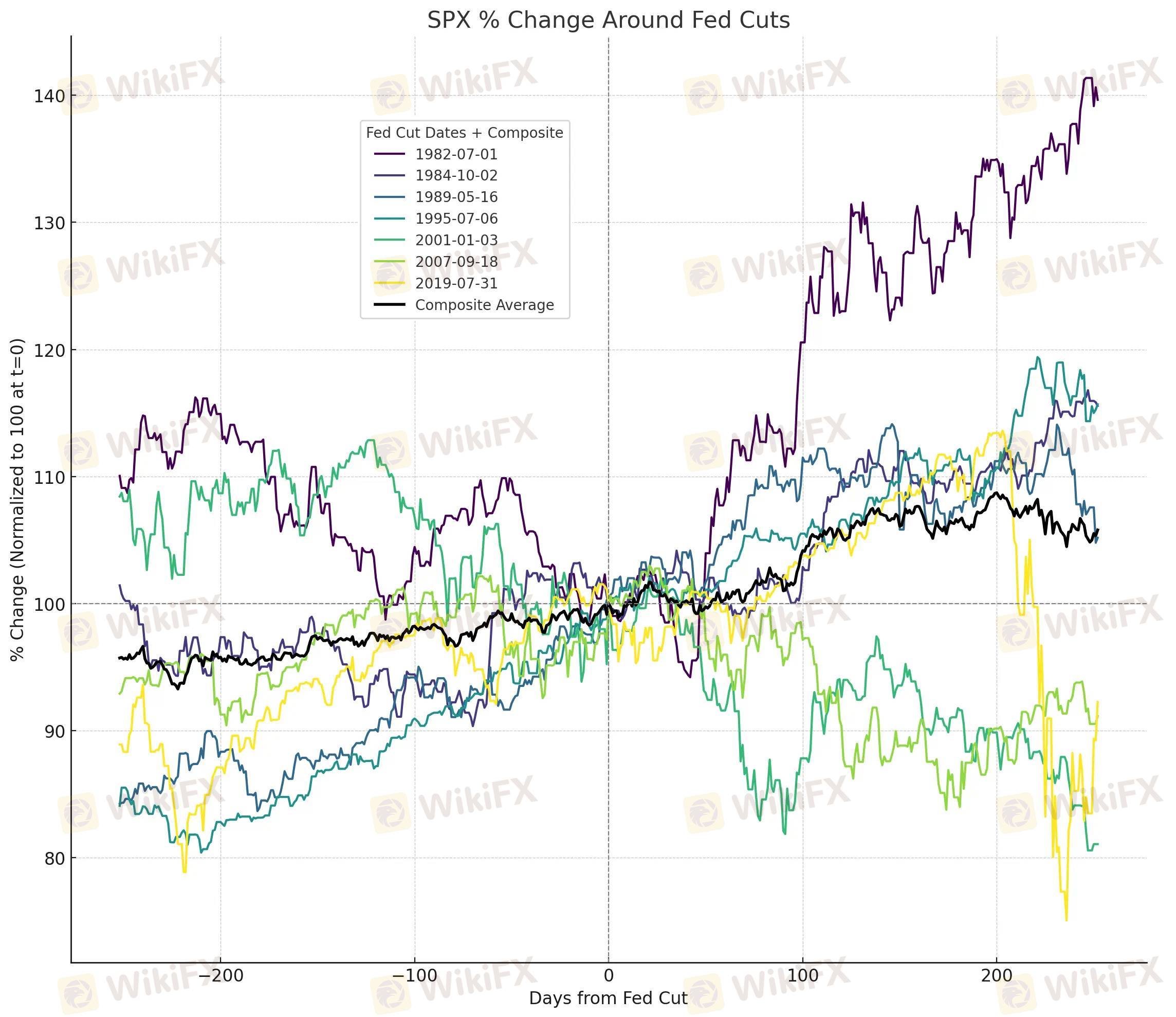2024-11-10 19:43
IndustryS&P 500, DJIA, Gold: How 40+ Years of Fed Rate Cut
The start of a new Fed rate cut cycle doesn’t necessarily lead to the “obvious” bullish reaction in the S&P 500 and DJIA that the “don’t fight the Fed” mantra would have you believe... read on to see the actual data!..
The History of the Federal Reserve and Basics of Monetary Policy
Since 1913, the Federal Reserve has played a crucial role in stabilizing the U.S. economy. The Federal Reserve Act was initially aimed at preventing bank failures and economic downturns, but the role of the central bank has evolved dramatically over the last 110+ years.
Today, the Fed’s primary focus is to maintain employment levels and control inflation through monetary policy, which includes managing interest rates and the overall money supply. As many readers know by now, lowering interest rates and increasing money supply are strategies used to stimulate economic growth, whereas raising rates can help cool down an overheating economy.
The History of Federal Reserve Interest Rates
Over the decades, the Federal Reserve has significantly refined its approach to managing interest rates, a journey marked by both challenges and evolution.
In the early years, particularly during the tumultuous period of the 1930s, the Fed's policies inadvertently contributed to the severity of the Great Depression, highlighting the critical need for a more nuanced understanding of monetary policy's impact on the economy.
Recognizing these early missteps, the Fed embarked on a path toward greater transparency and predictability in its monetary policy from the 1980s onwards. This era heralded a new approach to interest rate management, moving away from the rigid constraints of the gold standard and its successors towards a more flexible and communicative strategy.
By prioritizing the Federal Funds rate as the main lever of monetary policy, the Fed aimed to more effectively navigate the complexities of economic cycles, using rate adjustments as clear signals to the market and as a means to manage economic expectations. This strategy was aimed at mitigating inflationary pressures while supporting sustainable growth and employment. In other words, the modern history of Fed interest rates dates back to the early 1980s, with periods before that not reflecting the current reality of monetary policy.
The Modern History of Fed Rate Cut Cycles
With the Fed potentially entering a new phase of lowering interest rates, it's worth examining how such moves have influenced the economy and markets in the past. This involves looking at the S&P 500, DJIA, and gold prices around the start of previous rate cut cycles.
While history doesn't predict the future, it offers insights into potential market responses to Fed policies. Understanding these trends can help traders and investors avoid common misconceptions and better understand the broader implications of Fed interest rate cuts.
For the purposes of this analysis, an interest rate “cycle” is defined as a 100bps (1%) move higher or lower in interest rates. By this definition, there have been seven unique easing cycles since 1982, starting on the following dates:
7/1/1982
10/2/1984
5/16/1989
7/6/1995
1/3/2001
9/18/2007
7/31/2019
Like 0

6-1301张宇...张宇翔
Trader
Hot content
Industry
Event-A comment a day,Keep rewards worthy up to$27
Industry
Nigeria Event Giveaway-Win₦5000 Mobilephone Credit
Industry
Nigeria Event Giveaway-Win ₦2500 MobilePhoneCredit
Industry
South Africa Event-Come&Win 240ZAR Phone Credit
Industry
Nigeria Event-Discuss Forex&Win2500NGN PhoneCredit
Industry
[Nigeria Event]Discuss&win 2500 Naira Phone Credit
Forum category

Platform

Exhibition

Agent

Recruitment

EA

Industry

Market

Index
S&P 500, DJIA, Gold: How 40+ Years of Fed Rate Cut
 | 2024-11-10 19:43
| 2024-11-10 19:43The start of a new Fed rate cut cycle doesn’t necessarily lead to the “obvious” bullish reaction in the S&P 500 and DJIA that the “don’t fight the Fed” mantra would have you believe... read on to see the actual data!..
The History of the Federal Reserve and Basics of Monetary Policy
Since 1913, the Federal Reserve has played a crucial role in stabilizing the U.S. economy. The Federal Reserve Act was initially aimed at preventing bank failures and economic downturns, but the role of the central bank has evolved dramatically over the last 110+ years.
Today, the Fed’s primary focus is to maintain employment levels and control inflation through monetary policy, which includes managing interest rates and the overall money supply. As many readers know by now, lowering interest rates and increasing money supply are strategies used to stimulate economic growth, whereas raising rates can help cool down an overheating economy.
The History of Federal Reserve Interest Rates
Over the decades, the Federal Reserve has significantly refined its approach to managing interest rates, a journey marked by both challenges and evolution.
In the early years, particularly during the tumultuous period of the 1930s, the Fed's policies inadvertently contributed to the severity of the Great Depression, highlighting the critical need for a more nuanced understanding of monetary policy's impact on the economy.
Recognizing these early missteps, the Fed embarked on a path toward greater transparency and predictability in its monetary policy from the 1980s onwards. This era heralded a new approach to interest rate management, moving away from the rigid constraints of the gold standard and its successors towards a more flexible and communicative strategy.
By prioritizing the Federal Funds rate as the main lever of monetary policy, the Fed aimed to more effectively navigate the complexities of economic cycles, using rate adjustments as clear signals to the market and as a means to manage economic expectations. This strategy was aimed at mitigating inflationary pressures while supporting sustainable growth and employment. In other words, the modern history of Fed interest rates dates back to the early 1980s, with periods before that not reflecting the current reality of monetary policy.
The Modern History of Fed Rate Cut Cycles
With the Fed potentially entering a new phase of lowering interest rates, it's worth examining how such moves have influenced the economy and markets in the past. This involves looking at the S&P 500, DJIA, and gold prices around the start of previous rate cut cycles.
While history doesn't predict the future, it offers insights into potential market responses to Fed policies. Understanding these trends can help traders and investors avoid common misconceptions and better understand the broader implications of Fed interest rate cuts.
For the purposes of this analysis, an interest rate “cycle” is defined as a 100bps (1%) move higher or lower in interest rates. By this definition, there have been seven unique easing cycles since 1982, starting on the following dates:
7/1/1982
10/2/1984
5/16/1989
7/6/1995
1/3/2001
9/18/2007
7/31/2019
Like 0
I want to comment, too
Submit
0Comments

There is no comment yet. Make the first one.

Submit
There is no comment yet. Make the first one.